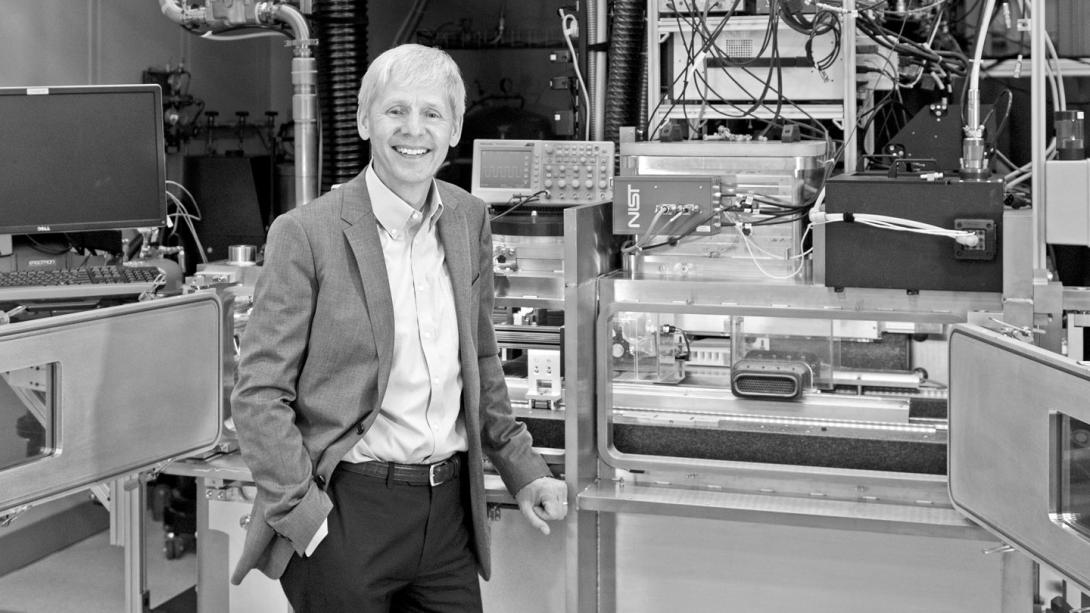Measuring a career

Jim Olthoff ’80 graduated with a degree in physics, but never imagined it leading him to the world of metrology. Today, as a leader in the field, the study of measurements plays a significant role in Olthoff’s life.
Olthoff is director of the Physical Measurement Laboratory at the National Institute of Standards and Technology (NIST), located just north of Washington, D.C., and represents the U.S. on several international science committees.
His laboratory of more than 500 federal employees is responsible for maintaining all physical measurement standards for the United States. “In some way or another—in some ways more directly than others—we are responsible for the underpinning accuracy of all the measurements in the U.S.,” said Olthoff.
“Pretty much anything you can think of—be that the electric power meter on the side of your house, or the fact that your cell phone always has the correct time—is traced back to the work we do at NIST.”
Contrary to popular belief, all measurements in the United States are based upon the International System of Units or the metric system. “We have actually been a ‘metric country’ since a bit after the Civil War,” said Olthoff. While this may not be evident to the average citizen, it is an essential reality for scientists and engineers.
But perhaps more important is to understand how the metric system is changing and evolving with technology. In fact, unbeknownst to many, the metric system is poised for the most significant change in more than 50 years.
There are seven base units of measurement, and over the course of time, all of them except one have been tied to some constant of nature. For example, length—once defined by a physical meter stick—is now defined in terms of the speed of light. However, mass is the last unit to be based upon an artifact.
“There is a piece of metal—Le Grand K—that sits in a vault outside of Paris, manufactured back in the 1870s. Every measurement of mass in the world is traceable back to that kilogram artifact,” explained Olthoff. However, with mass being tied to a physical artifact, there is always the risk of it becoming damaged, lost, or just changing with time.
“The big change coming in November is that mass will now be defined as a physical constant of nature, Planck’s constant (h). An easier way to think about this change is, instead of comparing masses to a piece of metal, we will now be able to compare forces. We will be able to realize a kilogram everywhere.” According to Olthoff, this change will also help in improving the accuracy of very small mass measurements, which is important for things like the medical field.
Olthoff and the director of NIST will be traveling to Versailles in November along with representatives from the 53 countries who are signatories of the Treaty of the Meter to vote on this change.
The worldview that I received at Calvin has been something that I have been consistently dedicated to. It’s interesting to me that I never planned to do what I do now—be in management, be responsible for something big—I just tried to do a good job and put my family and God first, and I’ve been blessed for that in terms of being professionally successful,” said Olthoff.
He believes Calvin’s mission rings true to the work he does today. “There’s a lot of justice involved in making sure that measurements are correct and accurate and fair across the world. The origins of the metric system come out of the French Revolution, which was all about equality and individual rights, but really fairness of measurements is a biblical principle. There is something to be said about the good of having standards and making sure our answers are right.”
“There's a lot of justice involved in making sure that measurements are correct and accurate and fair across the world.”






